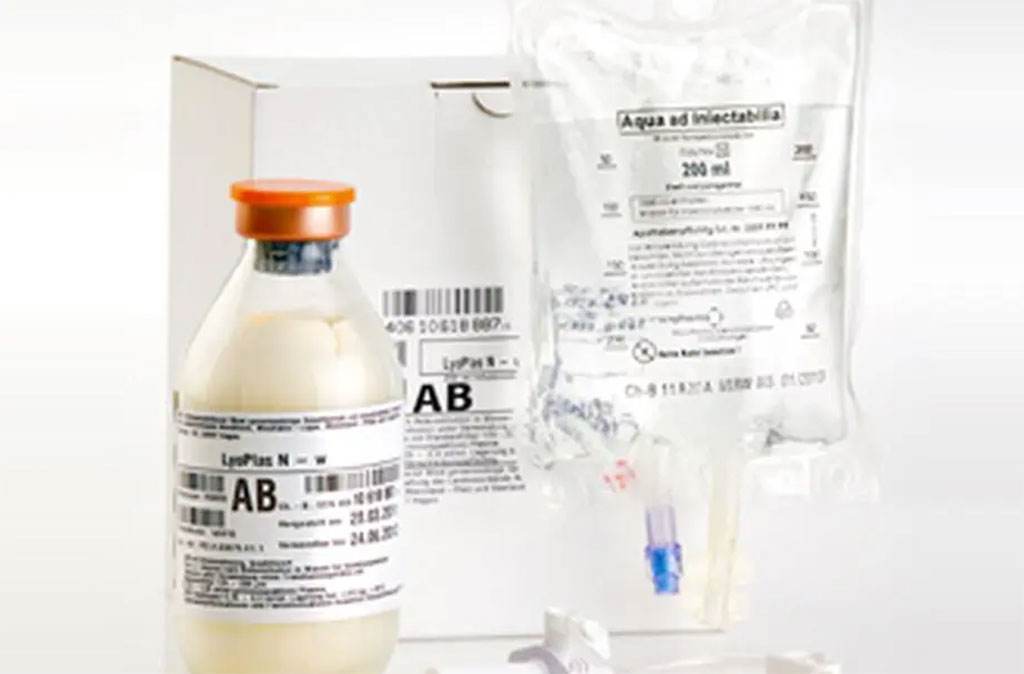Blood Products Use in Trauma-Related Hemorrhagic Shock Patients Questioned
Posted on 05 Apr 2022
Treatment of hemorrhagic shock is now increasingly focused on the early use of hemorrhage control, tranexamic acid, and blood-based resuscitation with packed red cells and plasma. The improved survival from these and other strategies within streamlined trauma systems have been reported in the military and civilian settings, and have stimulated an interest in prehospital transfusion.
Extending the use of both packed red blood cells (PRBC) and plasma for major hemorrhage into the prehospital environment might seem intuitive, but has implications for the transfusion and clinical communities. Transfusion specific concerns include sustaining the demand for universal blood products, blood product wastage, and regulatory compliance.

Clinical scientists at the Queen Elizabeth Hospital (Birmingham, UK) and their colleagues carried out a randomized controlled trial of resuscitation with pre-hospital blood products (RePHILL) is a multicenter, allocation concealed, open-label, parallel group, randomized, controlled, phase 3 trial done in four civilian prehospital critical care services in the UK.
Eligible participants were randomly assigned to receive either up to two units each of packed red blood cells (PRBC) and LyoPlas or up to 1 L of 0.9% sodium chloride administered through the intravenous or intraosseous route. Sealed treatment packs which were identical in external appearance, containing PRBC–LyoPlas or 0.9% sodium chloride were prepared by blood banks and issued to participating sites according to a randomization schedule. From Nov 29, 2016 to Jan 2, 2021, prehospital critical care teams randomly assigned 432 participants to PRBC–LyoPlas (n=209) or to 0.9% sodium chloride (n=223).
The scientists reported that the median follow-up was 9 days (IQR 1 to 34) for participants in the PRBC–LyoPlas group and 7 days (0 to 31) for people in the 0.9% sodium chloride group. Participants were mostly white (62%) and male (82%), had a median age of 38 years (IQR 26 to 58), and were mostly involved in a road traffic collision (62%) with severe injuries (median injury severity score 36, IQR 25 to 50). Before randomization, participants had received on average 430 mL crystalloid fluids and tranexamic acid (90%). Upon arrival to the hospital, the mean hemoglobin concentration was higher in the PRBC–LyoPlas group than in the 0.9% sodium chloride group (133 g/L versus 118 g/L).
The composite primary outcome occurred in 128 (64%) of 199 participants randomly assigned to PRBC–LyoPlas and 136 (65%) of 210 randomly assigned to 0.9% sodium chloride (adjusted risk difference –0.025%). The rates of transfusion-related complications in the first 24 hours after ED arrival were similar across treatment groups (PRBC–LyoPlas 11 [7%] of 148 compared with 0.9% sodium chloride nine [7%] of 137, adjusted relative risk 1.05. Serious adverse events included acute respiratory distress syndrome in nine (6%) of 142 patients in the PRBC–LyoPlas group and three (2%) of 130 in 0.9% sodium chloride group, and two other unexpected serious adverse events, one in the PRBC-LyoPlas (cerebral infarct) and one in the 0.9% sodium chloride group (abnormal liver function test). There were no treatment-related deaths.
The authors concluded that the trial did not demonstrate that PRBC–Lyoplas improved episode mortality or lactate clearance when compared with 0·9% sodium chloride for participants with trauma-related hemorrhagic shock. Based on current evidence, the decision to commit to routine prehospital transfusion in civilian practice will require careful consideration by all stakeholders. The study was published on April 1, 2022 in the journal The Lancet Hematology.
Related Links:
Queen Elizabeth Hospital













